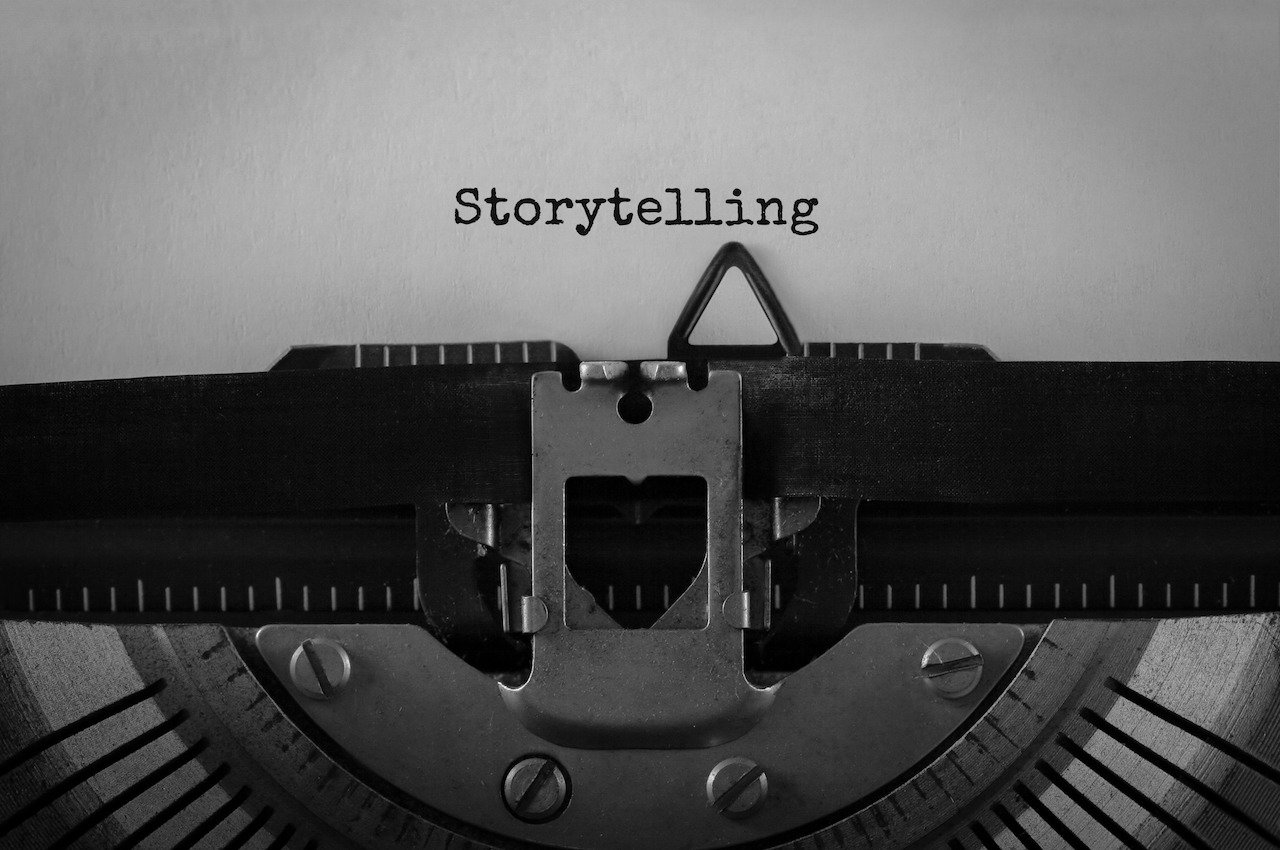In today’s oversaturated digital landscape, it’s easy for your brand to get lost in the noise. Just think about how many advertisements, emails, and messages you encounter on a daily basis as a consumer (hint: it’s well over 4,000). I’m willing to bet only a small percentage of them actually catch your attention.
So how can you make sure your brand stands out from the crowd and genuinely connects with its customers? The answer lies in leveraging your brand story.
This post will teach you how to craft and implement your brand story using a simple five-step process. Keep reading to learn more!
What is a brand story?
A brand story is a cohesive, compelling narrative that clarifies what your business does, what it stands for, and why that matters to your customers. It is the foundation of your messaging and positioning strategy and should be woven into every customer touchpoint.
What a brand story is not:
- A tagline
- An origin story
- A one-off campaign
Why is your brand story important?
Humans are hardwired to understand and remember stories. In fact, cognitive psychologist Jerome Bruner found that stories are 22x more memorable than facts alone.
By tapping into the power of storytelling, you can build loyalty, trust, and a sense of shared values between your brand and its customers. You can also leverage storytelling to establish a unique identity that differentiates your brand from its competitors.
How To Craft Your Brand Story
Crafting your brand story can seem daunting at first, but it doesn’t have to be! This five-step guide will walk you through the entire process. All you need is an open mind and a place to write down your thoughts along the way.
Step One: Brand Purpose
Just like people, every brand has a unique set of guiding beliefs. Collectively, these make up your brand purpose.
The key elements of your brand purpose are typically found within your mission and vision statements as well as your core values. Don’t have those solidified yet? No problem. Here are some questions to get you started:
- Why did you create this company?
- What problem(s) are you trying to solve?
- What future are you helping create?
- How are you making that future a reality?
- What are 3-5 values that will guide you along the way?
Answering these questions will help you unearth your brand’s purpose and establish a clear direction for your storytelling.
Step Two: Audience
To create a brand story that resonates with your audience, you need to understand who they are and what they care about.
If you don’t already have documented buyer personas (and/or ideal company profiles for B2B), you’ll want to get answers to the following questions from folks in sales, customer success, and other roles in your organization that regularly interact with your customers:
- Describe your dream customer. Why are they such a good fit?
- What problems/challenges do we solve for them?
- How are they currently trying to solve these problems?
- What is the cost of them doing nothing about it?
- What do they value? What motivates them?
- What are they trying to achieve? What are they trying to avoid?
- What demographic/firmographic information describes our ideal customer?
- Who is NOT a good fit for us and why?
With a clear understanding of who you’re talking to, you can craft a brand story that will uniquely connect with them.

Step Three: Positioning
Now that you understand your brand purpose and your audience, it’s time to define how you’ll position yourself within the market.
This step will involve a bit of research. Here are some questions to guide you:
- Are you looking to fit into, create, or disrupt a niche?
- What are your strengths, weaknesses, and opportunities as a business?
- Who are your closest competitors?
- What are your competitors’ strengths, weaknesses, and opportunities?
- How have your competitors positioned their brands?
- How is your industry changing? How will you adapt?
- If a customer is torn between you and a competitor, how would you sway them?
Step Four: Voice & Tone
It’s not just about what you say, it’s also about how you say it. A clearly defined brand voice and tone will help you frame your messaging so it's on-brand at every touchpoint.
Use the following questions to shape your brand voice and tone:
- What adjectives would you use to describe your brand?
- How do you want people to feel after interacting with your brand?
- If your brand were a person, how would you describe their personality?
- Are there any other brands whose voice and tone you like?
- What do you not want to sound like?
- Is there any specific language you want to embrace or avoid?
Step Five: Narrative
You’ve built the foundation for your brand story in steps one through four — it’s time to bring it all together. Drawing on your brand purpose, audience, positioning, and voice and tone, craft a short narrative that describes what you do, who you’re doing it for, and why it matters.
This step is, of course, highly personalized, but here are some pro tips that can help you out:
- Every good story has a hero; make sure your customer is the hero in this story.
- Every good hero also faces a conflict. Call out your customer’s conflict as clearly as possible and follow it up with your solution.
- Think about how your audience should feel after reading your brand story. Should they feel inspired? Amused? Relieved?
- Write as much as you need to at first, and then edit aggressively. Your brand story should be as concise as possible.
Put Your Brand Story In Motion
Now it’s time for the real work — applying your brand story to your marketing strategy. It can be overwhelming to shift your messaging all at once, so take it slowly. Start by identifying the channels and assets that your customers interact with the most. Are there important elements of your brand story missing from these touchpoints? How could you reimagine the messaging to better tell your story?
For new campaigns, think about how you can leverage your brand story in unexpected ways. Can you call out a key issue through original research? Could you champion your hero through social proof campaigns?
WEBITMD can help you craft and implement a compelling brand story across every touchpoint. To learn more, download our Growth Stack Guide or get in touch with us today.






.jpg)



.jpg)





![5 Reports to Elevate Your HubSpot Sales Dashboard [+ Examples]](https://blog.webitmd.com/hs-fs/hubfs/Imported_Blog_Media/6-winning-examples-of-a-hubspot-sales-dashboard-2.png?width=767&name=6-winning-examples-of-a-hubspot-sales-dashboard-2.png)